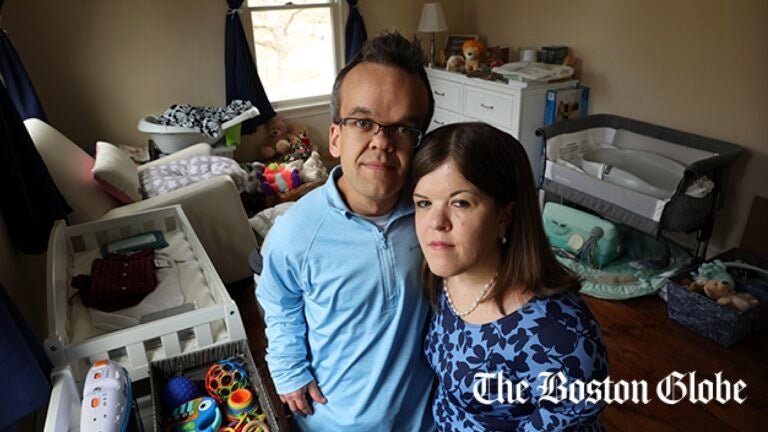Well being
The lawsuit towards two Salem Hospital medical doctors alleged that they failed to acknowledge the signs of an aortic aneurysm and order testing that would have dominated it out.

A jury has awarded $29 million to the household of Joseph Brown, a 43-year-old Salem man who died of an undiagnosed and untreated aortic aneurysm and dissection at Salem Hospital in 2018.
The award — which is able to go to Brown’s daughters, now 18 and 24 years previous — was handed down in Essex Superior Court docket final month following a two-week trial.
Boston regulation agency Lubin & Meyer litigated the case towards Salem Hospital Drs. Steven Browell and William Kenyon, alleging that they failed to acknowledge the signs of an aortic aneurysm and order testing that would have dominated it out.
Based on the Facilities for Illness Management and Prevention, an aortic aneurysm is “a balloon-like bulge within the aorta, the big artery that carries blood from the center by way of the chest and torso.” Dissection occurs when the power of the pumping blood splits the layers of the artery wall, permitting blood to leak in between, the CDC explains.
“A verdict like that is bittersweet [for Brown’s family],” Lubin & Meyer associate Robert Higgins instructed Boston.com. “There’s satisfaction that the jury heard his story and understood what occurred to him, however I do suppose it’s laborious to take heed to that and notice {that a} easy take a look at would have saved his life.”
What occurred to Joseph Brown?
Brown awoke on Jan. 13, 2018, with higher belly ache that finally unfold to his chest and again, prompting him to hunt care at Salem Hospital’s emergency room, Higgins defined.
Testing dominated out sure situations, together with a coronary heart assault or pulmonary embolism. Nonetheless, blood exams discovered an elevated white blood cell depend, and Higgins stated the suppliers who handled Brown suspected he might need an an infection. He was finally admitted to the hospital.
Based on Higgins, CT angiography (CTA) — a CT scan coupled with the injection of a particular dye — would seemingly have proven the true nature of Brown’s situation.
-

Boston Youngsters’s Hospital pays $15 million after youngster dies throughout sleep research
-
Jury awards $20 million to man who misplaced a leg after hospital missed blood clot
However Kenyon asserted in court docket paperwork that given Brown’s signs, take a look at outcomes, laboratory research, and bodily examination, the usual of care didn’t name for him to order scans that will rule out an aortic aneurysm or aortic dissection.
Kenyon stated that aortic dissection sometimes presents as “searing chest ache, typically described by a affected person as ‘the worst ache of my life,’ and a tearing sensation, with unstable very important indicators and or ache radiating to the again.”
Brown, he stated, had “a constellation of nonspecific signs” and an “uncommon presentation of a uncommon situation” sometimes seen in sufferers 65 and older.
Based on Kenyon, Brown had punctured his foot a number of days earlier, and a foot X-ray confirmed a doable overseas physique that would have been a supply of an infection. A chest X-ray, in the meantime, “was destructive apart from gentle hazy interstitial opacity that would signify a small airway irritation or creating/early pneumonia.”
Brown’s ache and shortness of breath worsened early the subsequent morning, and one other physician ordered a scan that exposed the aneurysm and dissection, in accordance with Higgins.
By then, it was too late; Brown’s coronary heart stopped twice earlier than he might be transferred to a Boston hospital for surgical procedure, and medical doctors have been finally unable to resuscitate him.
Conflict over care
“There was a whole lot of dialogue within the trial — why did this occur?” Higgins recalled. “It’s that they [Browell and Kenyon] clearly simply stated, ‘Look, he’s obtained an elevated white [blood cell] depend, it’s most likely an an infection. … He’s not of the conventional age to have an aneurysm and dissection, so we’re not going to go down that street.’ And they need to have.”
The lawsuit alleged that Brown’s aortic aneurysm might have been recognized about 20 hours earlier had Browell “supplied care inside the accepted commonplace of care,” and about 15 hours earlier in Kenyon’s case.
Browell maintained in court docket paperwork that his care and therapy of Brown “was acceptable and inside the usual of care” and that “nothing he did or didn’t do brought about Joseph Brown, Jr.’s demise.”
Kenyon equally argued that his therapy plan was “cheap and in accordance with the usual of care.”
In an announcement, Salem Hospital prolonged “heartfelt condolences” to Brown’s family members.
“Salem Hospital and its physicians, nurses, and employees care deeply about our sufferers and communities, and maintain ourselves to the best requirements of high quality, security and affected person care,” the hospital stated.
The way in which Higgins sees it, the takeaway in Brown’s case is easy: Physicians shouldn’t deal with sufferers based mostly on statistics and textbook definitions alone.
“In case you simply deal with folks based mostly on what the chances are, statistically, you’re going to overlook a whole lot of life-threatening situations,” he stated. “And that’s what occurred on this case.”
E-newsletter Signup
Keep updated on all the newest information from Boston.com
Originally posted 2023-05-10 18:58:56.